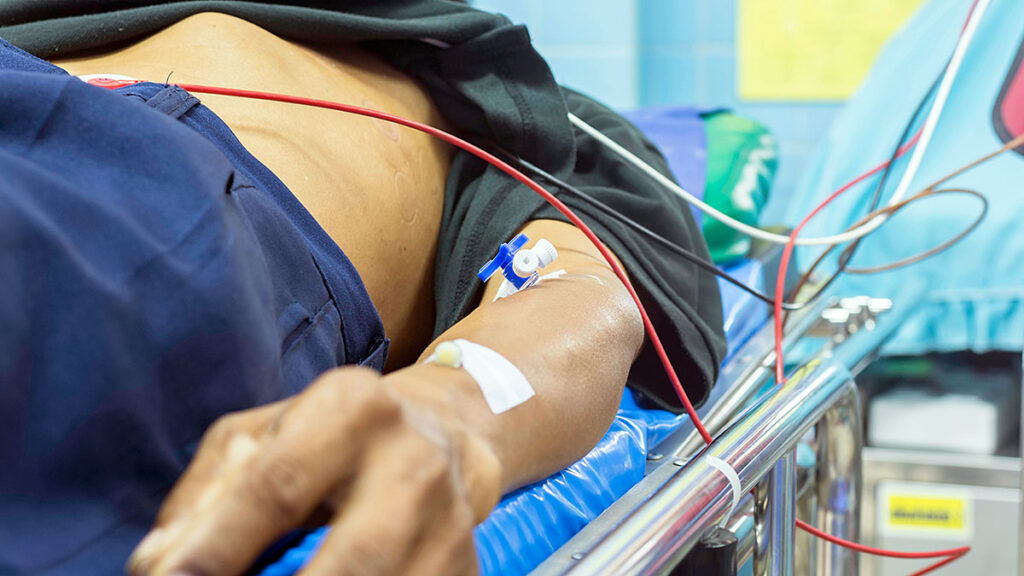Ready to reset your heart rhythm? Find out how cardioversion treats atrial fibrillation and improves quality of life.
Atrial fibrillation (AFib) is the most common type of heart arrhythmia, affecting millions of people worldwide. Characterized by an irregular and often rapid heartbeat, AFib can significantly impact heart function, causing symptoms such as fatigue, shortness of breath, and palpitations. More critically, it increases the risk of stroke and heart failure if left unmanaged. Cardioversion is a standard and effective procedure used to restore a normal heart rhythm in patients with AFib. This article explains how cardioversion works, what patients can expect, and how it fits into a broader AFib management strategy.
What is Cardioversion?
Cardioversion is a medical procedure to correct an abnormal heart rhythm, such as atrial fibrillation, and restore it to a normal sinus rhythm. There are two primary types of cardioversion:
- Electrical Cardioversion: This procedure uses a controlled electric shock to reset the heart’s rhythm. The shock is synchronized to the heart’s electrical cycle to ensure its safety and effectiveness.
- Pharmacological Cardioversion: Medications, known as antiarrhythmics, are administered intravenously or orally to restore a normal heart rhythm without the use of electricity.
Both forms of cardioversion aim to improve heart function, alleviate symptoms, and reduce the risk of complications associated with persistent AFib.
Why Cardioversion is Recommended
Cardioversion is typically recommended for AFib patients who experience significant symptoms or whose irregular heartbeat cannot be controlled with medications alone. It is particularly useful when AFib has recently developed and there is a higher likelihood of successfully restoring a normal rhythm.
The procedure offers several benefits:
- Symptom Relief: Cardioversion can alleviate symptoms like fatigue, palpitations, and dizziness, improving overall quality of life.
- Improved Heart Function: By restoring a normal rhythm, cardioversion allows the heart to pump blood more efficiently. This return to normal sinus rhythm restores “atrial kick”.
- Reduced Stroke Risk: With appropriate anticoagulation therapy, cardioversion helps manage stroke risk in patients with AFib.
Preparing for Electrical Cardioversion
1. Risk Assessment and Anticoagulation
Before undergoing cardioversion, patients are evaluated to assess the risk of blood clots. AFib can cause blood to pool in the heart, leading to clot formation. To reduce the risk of stroke during cardioversion, patients are often prescribed anticoagulation therapy for 3–4 weeks prior to the procedure. If immediate cardioversion is required, a transesophageal echocardiogram (TEE) may be performed to check for clots in the heart.
2. Pre-Procedure Instructions
Patients are typically advised to:
- Fast for at least 6–8 hours before the procedure.
- Take prescribed anticoagulants as directed by their doctor.
- Avoid certain medications, such as diuretics, which may affect electrolyte levels.
3. The Day of the Procedure
Cardioversion is performed in a hospital setting. Patients are placed under light sedation to ensure comfort, and electrode pads are attached to the chest. The synchronized electrical shock is delivered through these pads to reset the heart’s rhythm. The entire process usually takes less than an hour, including preparation and recovery.
What to Expect After Cardioversion
Following the procedure, patients are closely monitored for a few hours to ensure their heart rhythm remains stable and no complications arise. Most people can return home the same day.
Recovery Tips:
- Rest for the remainder of the day and avoid strenuous activity for 24–48 hours.
- Continue anticoagulation therapy as prescribed to prevent clot formation.
- Attend follow-up appointments to monitor heart rhythm and overall progress.
- While many patients feel immediate relief, it’s important to understand that cardioversion does not guarantee a permanent return to sinus rhythm. Lifestyle changes, medications, or additional procedures like ablation may be recommended to maintain long-term heart health.
Addressing Limitations and Risks
Cardioversion is generally a safe and well-tolerated procedure. However, as with any medical intervention, there are risks, including:
- Arrhythmia Recurrence: AFib may return, requiring repeat cardioversion or additional treatment.
- Blood Clots and Stroke: Anticoagulation therapy is essential to minimize these risks.
- Minor Skin Irritation: The electrode pads may cause slight skin redness or discomfort.
Close communication with a healthcare provider ensures that risks are minimized and outcomes are optimized.
Conclusion
Cardioversion is a valuable and effective procedure for restoring normal heart rhythm in patients with atrial fibrillation. By alleviating symptoms and improving heart function, it plays a key role in AFib management. Patients should understand the importance of pre-procedure preparation, adherence to anticoagulation therapy, and post-procedure follow-up to ensure the best results.
For those seeking personalized care or exploring cardioversion as a treatment option, consulting with a cardiac specialist like Dr. Adam Budzikowski can provide the expertise and guidance needed to make informed decisions.
A Riley Publication
Medically Reviewed By: Adam Budzikowski, MD, PhD
